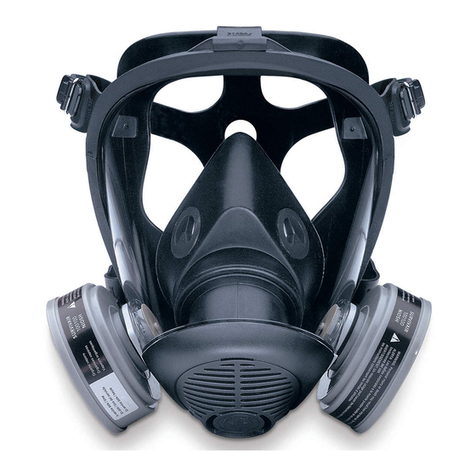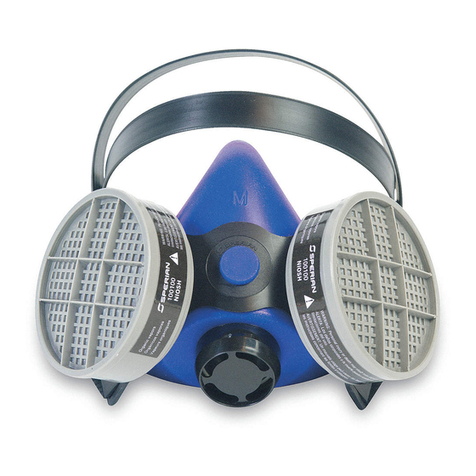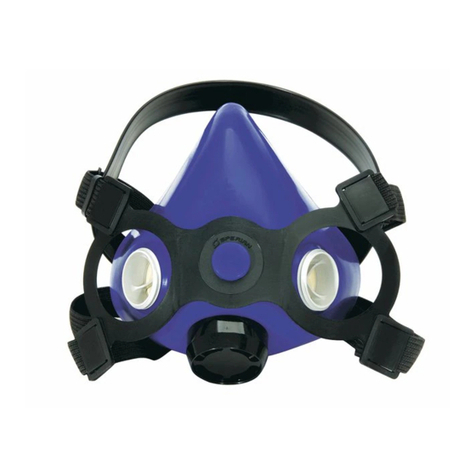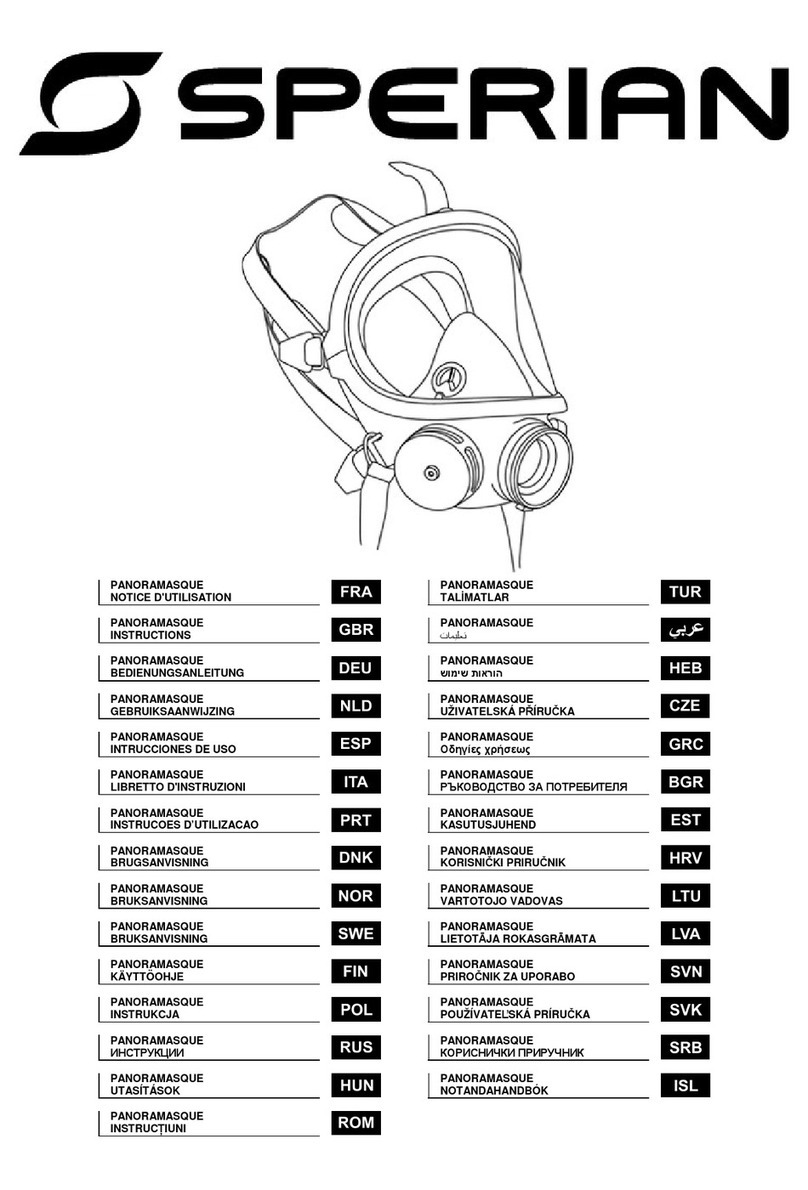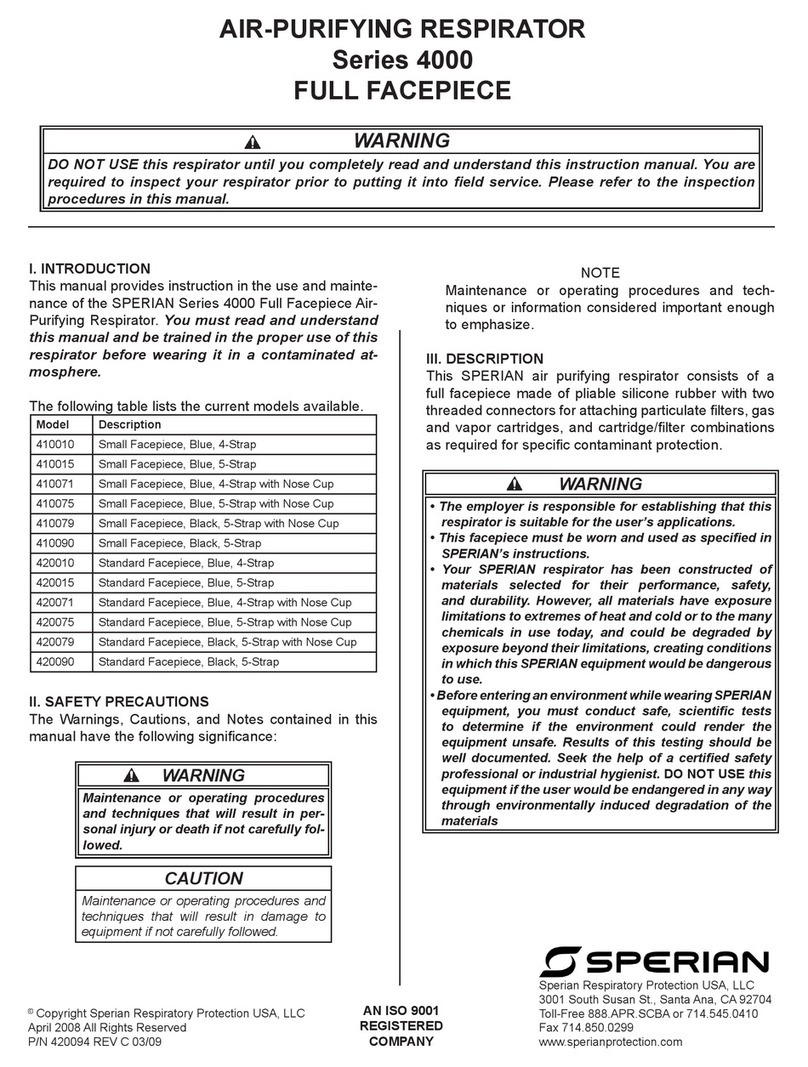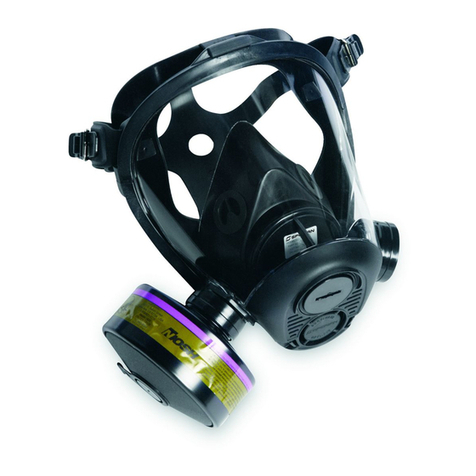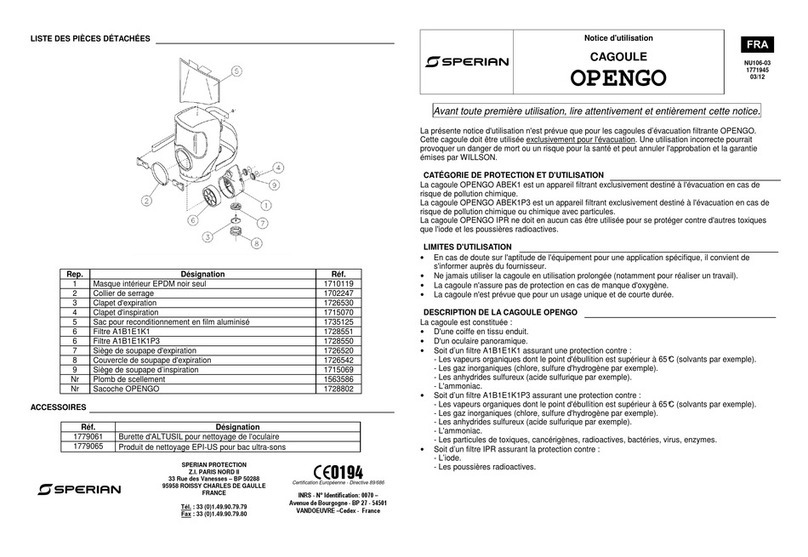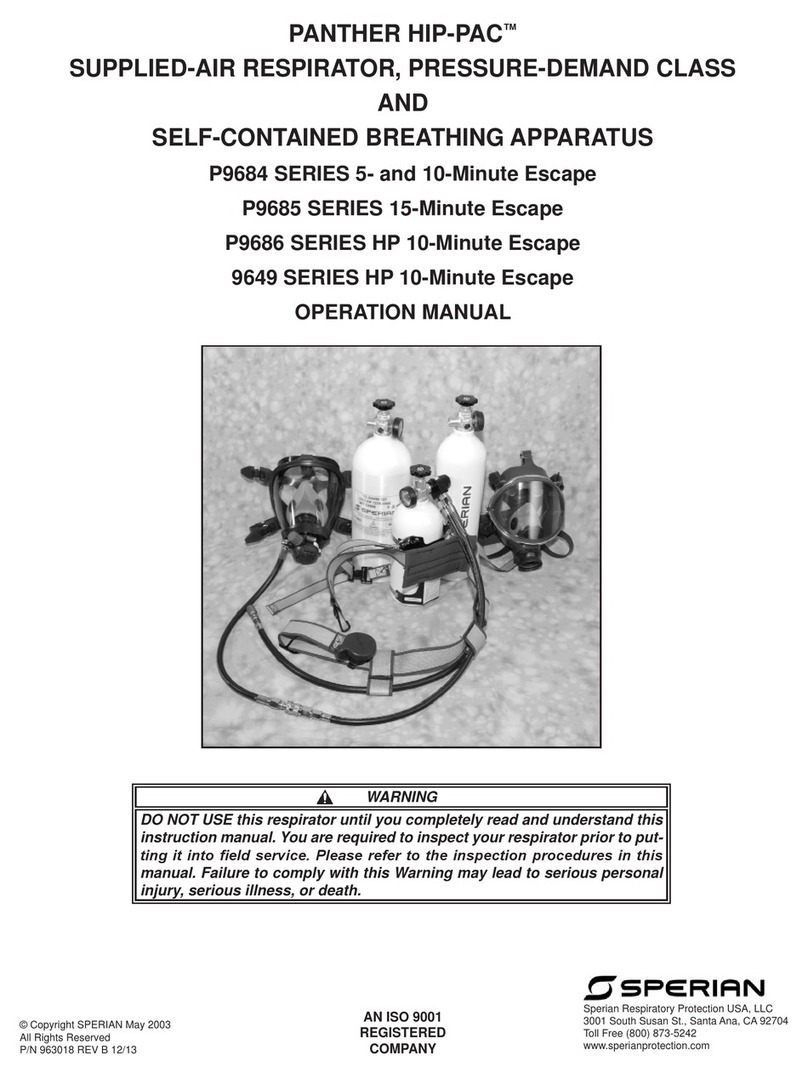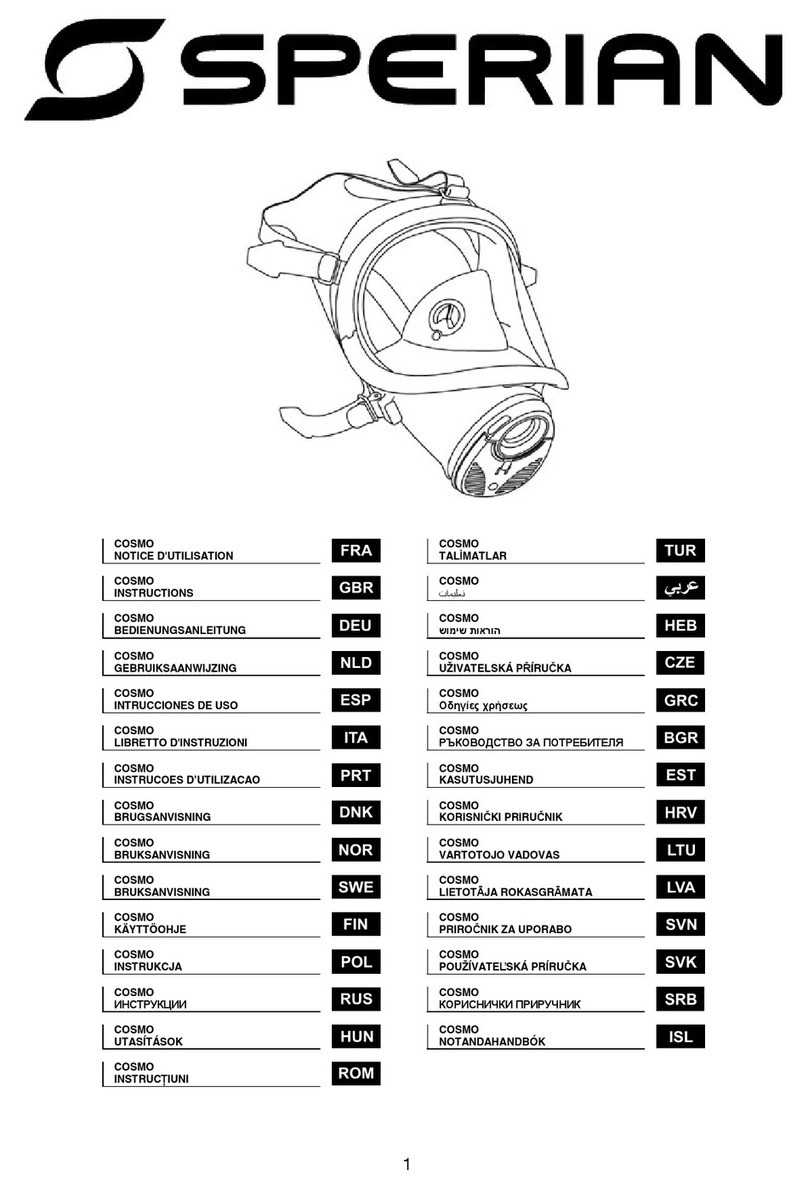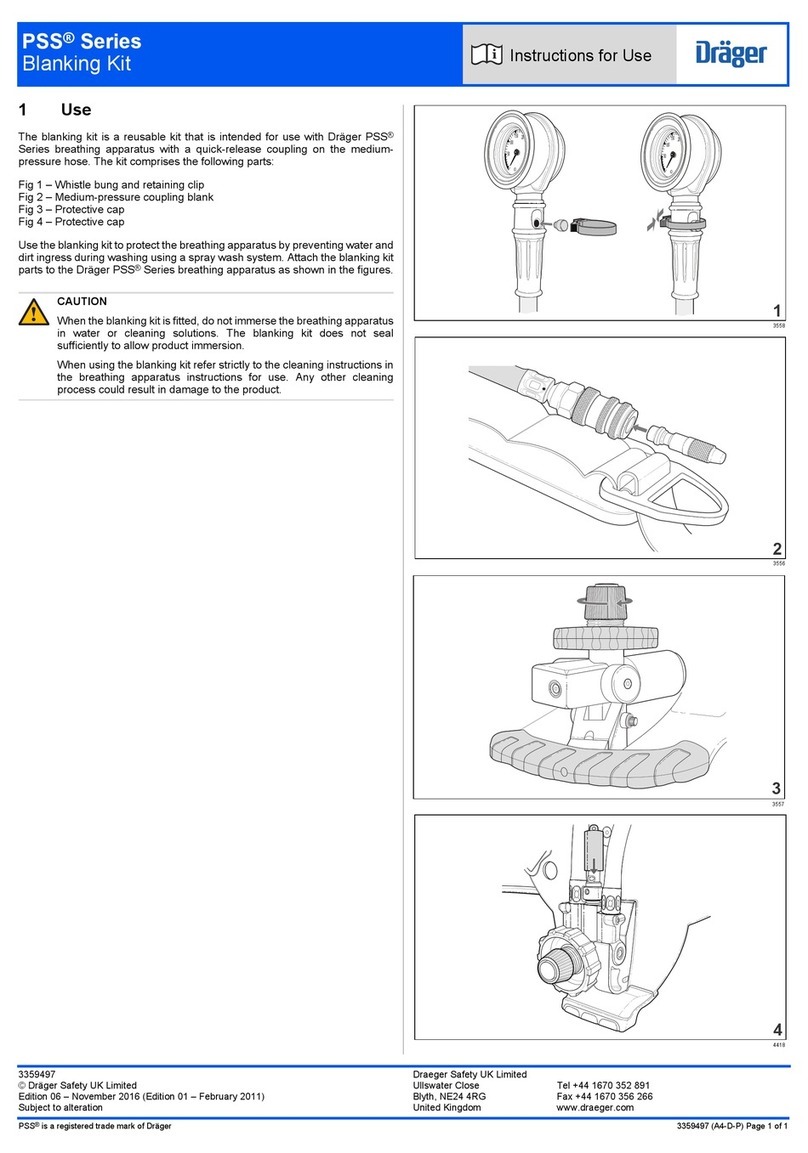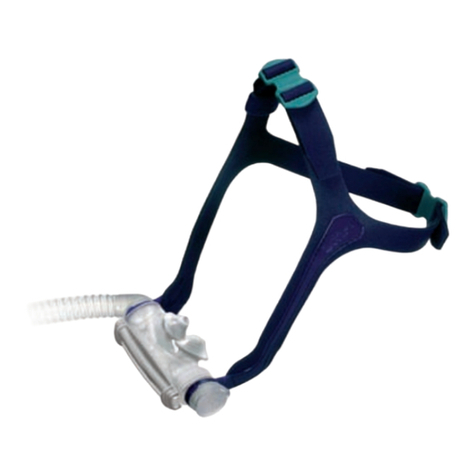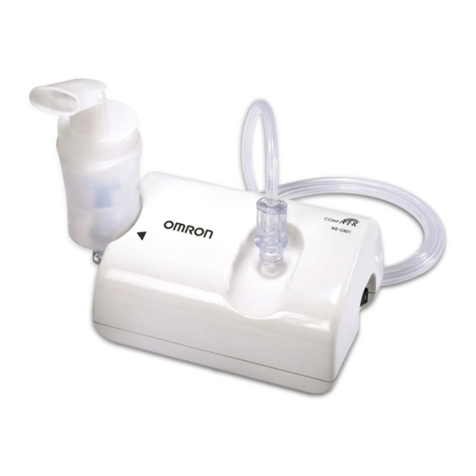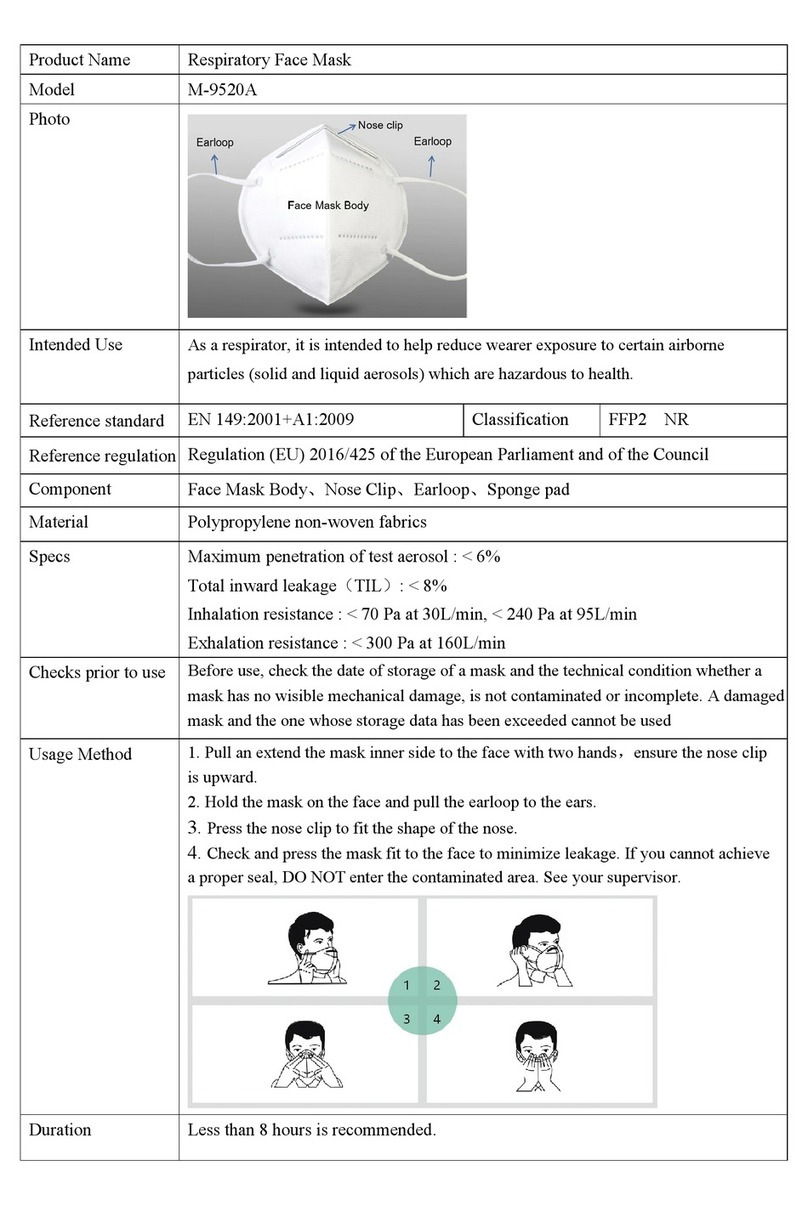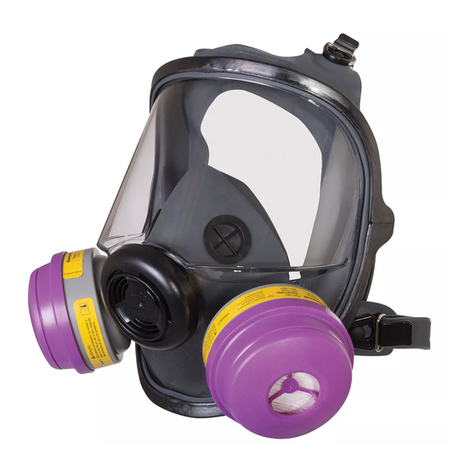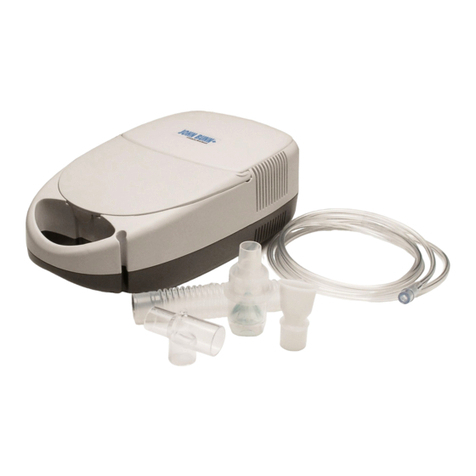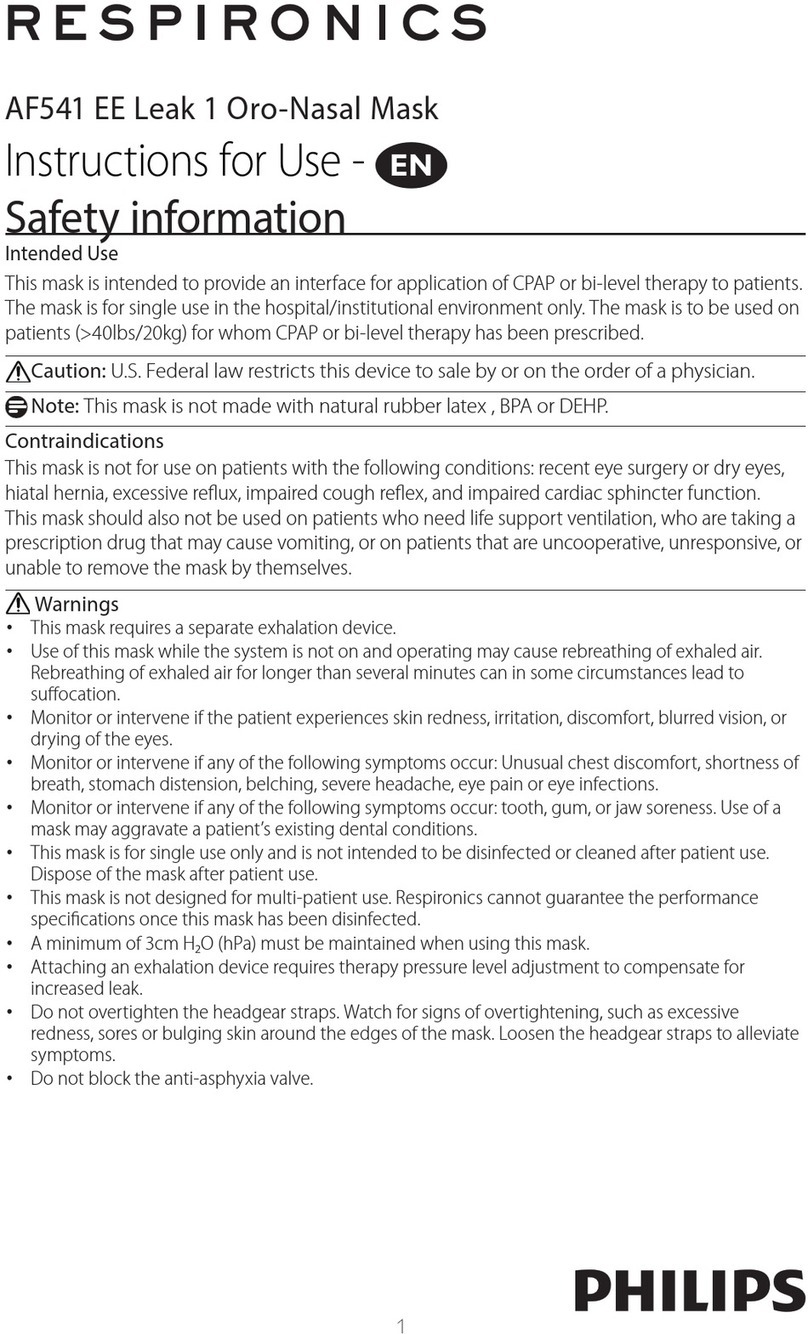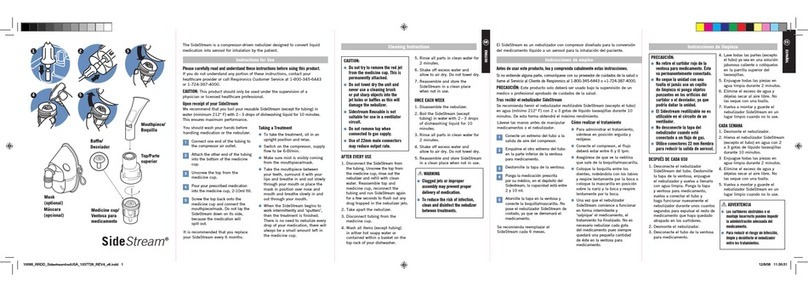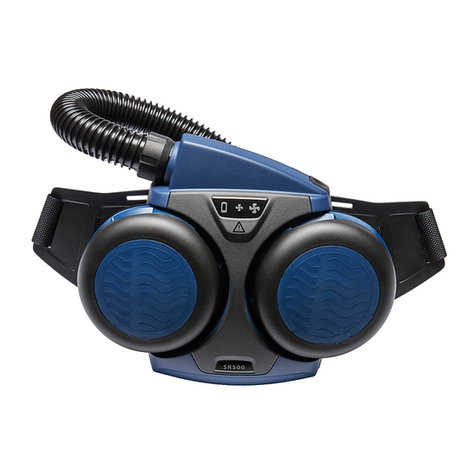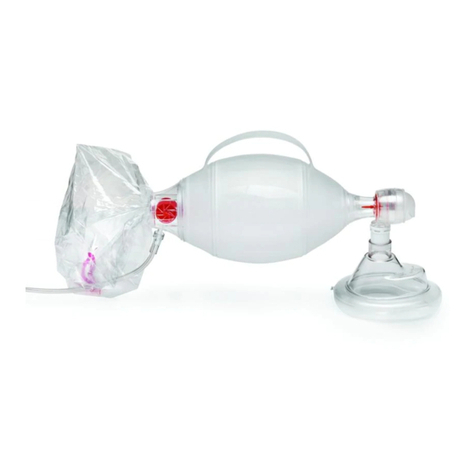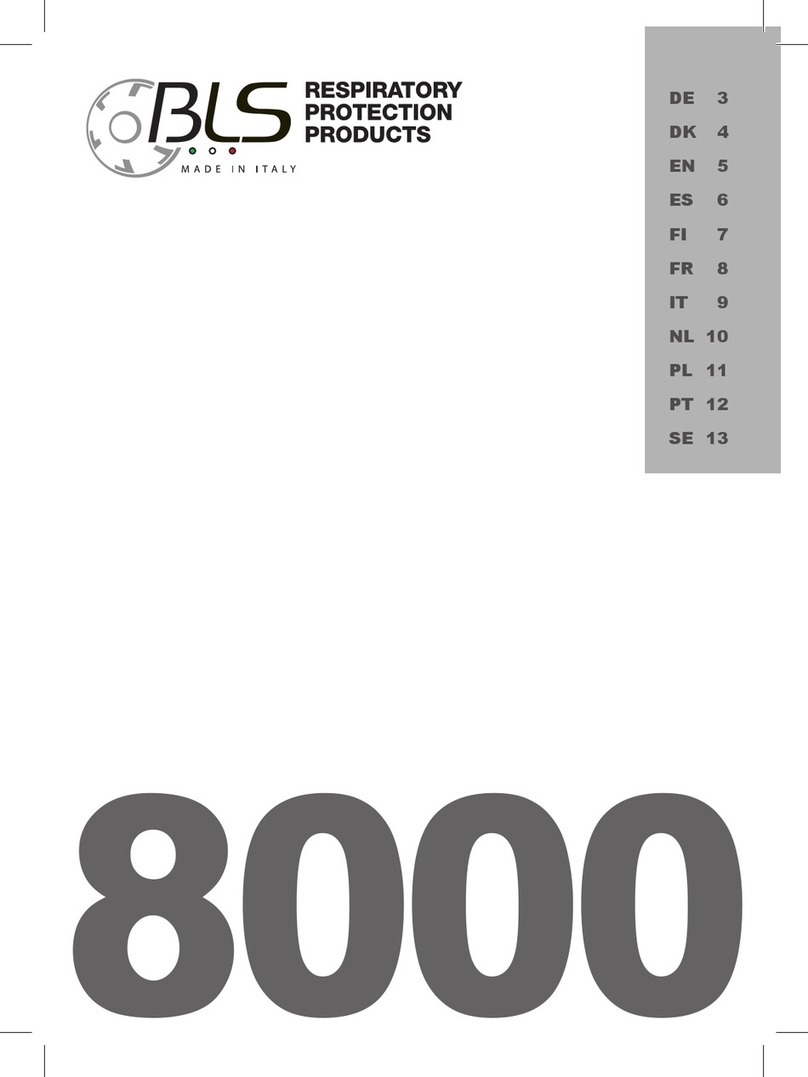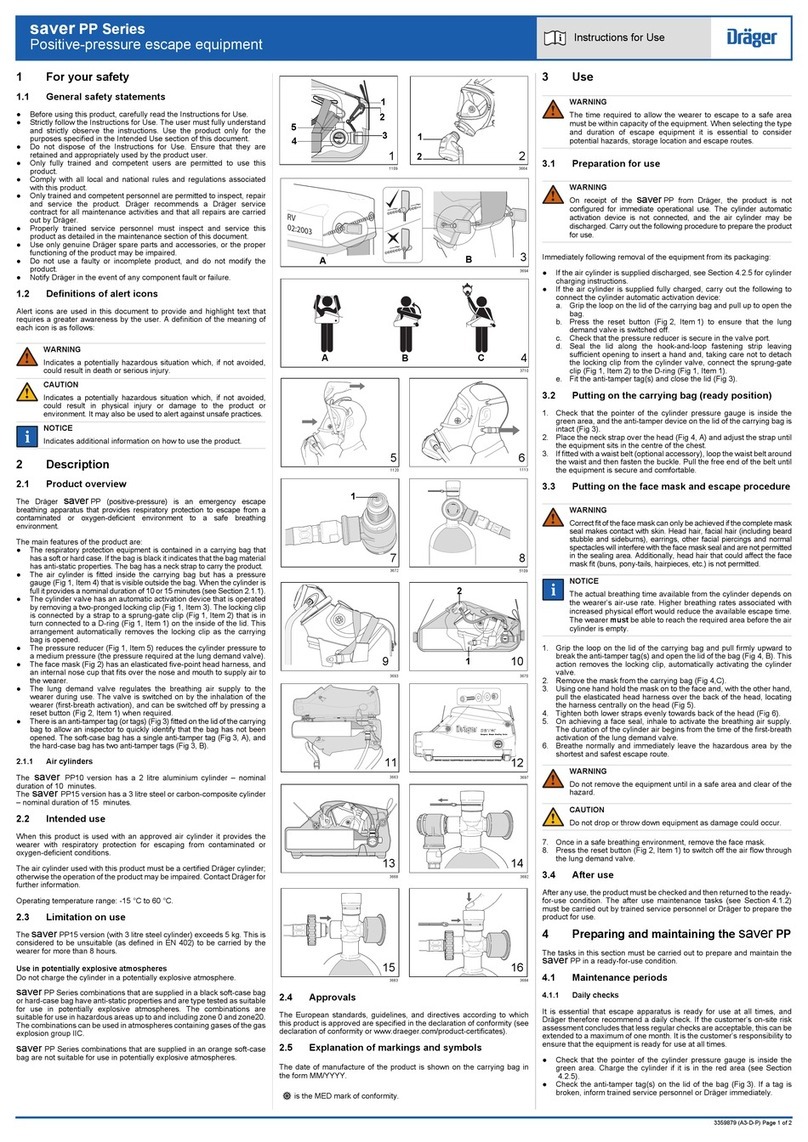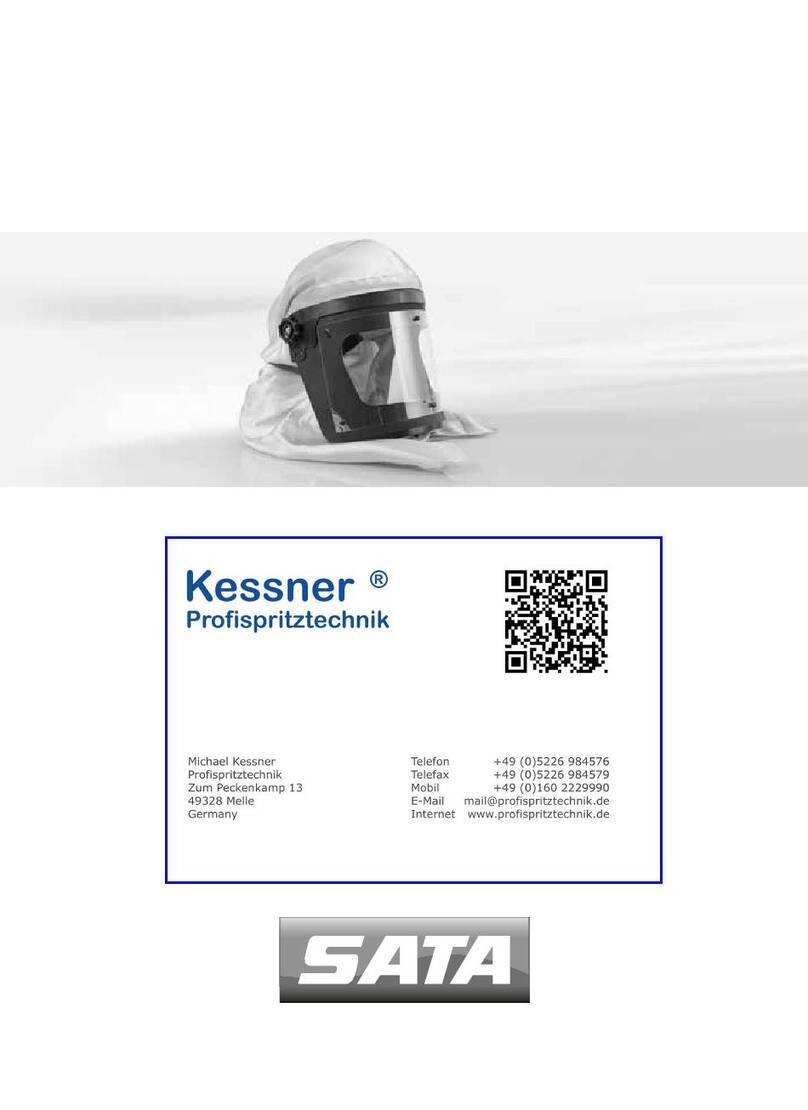
SURVIVAIR Opti-Fit™Convertible Facepiece
3
WARNING─Continued
● Do not wear this respirator if a satis-
factory fit, as determined by a quali-
tative or quantitative fit test, cannot
be obtained. See ANSI Z88.2, latest
issue, and OSHA 29 CFR 1910.134,
latest edition. Beards, stubble, or
sideburns will prevent a good face-
piece seal, and facial hair may inter-
fere with valve function. Do not use
this respirator unless you are clean
shaven. Absence of one or both den-
tures can seriously affect the fit of
the respirator.
● This respirator will reduce, but will
not eliminate the inhalation of con-
taminants. Some sensitive individu-
als may experience health prob-
lems when exposed to even minute
amounts of contaminants. This res-
pirator will not prevent health prob-
lems to those individuals.
● Use of components other than those
listed on the NIOSH approval label
and in this manual, or as authorized
by SPERIAN, or modification of this
respirator in any manner will void
the NIOSH certification and invali-
dates all SPERIAN’s warranties for
the respirator.
● Always read and follow the instruc-
tions listed in the Material Safety
Data Sheet for the chemicals that are
present in the work area.
● Do not use if you have a preexisting
skin condition (for example, folliculi-
tus or vitiligo) until you obtain clear-
ance from a medical doctor.
● This respirator must be worn and
used as specified in SPERIAN’s in-
structions. No respirator can pro-
vide complete protection from all
conditions. Use extreme care for
emergency conditions.
● Some individuals are sensitive to
chemicals (e.g., isocyanates, latex,
oil mists, etc.) or may have some
type of respiratory disorder (e.g.
asthma, chronic obstructive airway
disease, etc.). If you are sensitive to
any chemical or have a respiratory
disorder, you may have a severe reac-
tion at contaminant levels well below
accepted health levels, such as the
OSHA Permissible Exposure Limit
(PEL), ACGIH Threshold Limit Value
(TLV), or the NIOSH Recommended
Exposure Limits (REL). Many chemi-
cals (e.g., isocyanates, Mercury, etc.)
have no physical warning properties
and you cannot taste or smell the
contaminants even though they may
WARNING─Continued
● Do not use this respirator where en-
vironmental conditions could cause
the respirator facepiece to be dis-
lodged or slip.
● Immediately return to a non-contam-
inated area if:
You taste or smell contaminants,a.
or if your eyes, nose, or throat
become irritated.
Breathing becomes difcult.b.
The air you are breathing be-c.
comes uncomfortably warm.
You feel nauseous or dizzy.d.
You notice a loss or decrease ine.
airow.
The facepiece moves, slips, orf.
leaks.
● This respirator does not protect ex-
posed areas of the body. Some con-
taminants can be absorbed directly
through the skin while others may
irritate exposed areas.
● This respirator does not provide pro-
tection from hazardous rays or harm-
ful noise. Always wear proper head
and ear protection.
● This respirator must not be used
underwater, for fumigation, inte-
rior structural fire fighting, abrasive
blasting operations, or in areas where
high heat, sparks, or flames could
contact the respirator. If this respi-
rator will be used during welding, it
is the user’s responsibility to obtain
the proper equipment for protection
against sparks, optical radiation, and
impact. This respirator will not pro-
tect you against these hazards.
● This respirator must be used in con-
junction with a written respirator
program meeting the requirements
of the OSHA Standard for Respira-
tory Protection, 29 CFR 1910.134,
available from the U.S. Department
of Labor, Occupational Safety and
Health Administration. The program
must include procedures for evalu-
ating air contaminants and selecting
appropriate respirators; procedures
for proper use of respirators; proce-
dures for testing the facepiece fit of
respirators; procedures for cleaning,
disinfecting, inspecting, maintaining,
and storing respirators; procedures
for determining if workers are physi-
cally and medically capable of wear-
ing respirators; and procedures for
training employees in the use and
care of respirators and in recogniz-
ing the hazards associated with con-
taminants in the work place.
